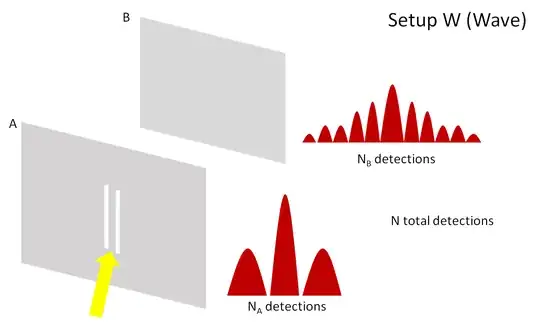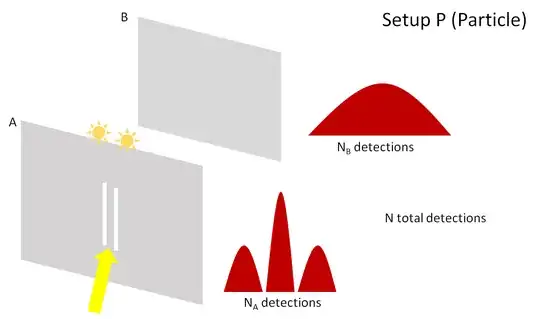I've come up with a thought experiment to help myself understand the classic double slit test, and specifically to understand what happens to the particles that do not get detected on the other side of the slits due to destructive interference. I couldn't find anything quite like this in popular literature, but if it has been done already even better.
In my setup there are two detection surfaces placed one behind the other, A and B. They are both sensitive to electrons and can record the X position of the hit. In surface A there are double slits. The electrons are pointed directly at the center of A. The assumption is that the electrons we do not detect at B will be detected at A.
In the first setup - W for wave - there is no path detection, so we would expect the interference pattern at B. In the second setup - P for particle - we have lights placed right above the slits at the exit point so that we can see the paths of each electron; in this case we do not expect the interference pattern at B. In both setups we fire off the exact same number of electrons, one at a time.
Here are illustrations:
And here are the questions:
- Do I have the correct rough detection patterns at both A and B in both the W and P setups?
- Will the total number of detections N in each setup W and P be the same? My understanding is yes.
- Will Nb (the total number of detections at B) in the W setup be less than Nb in the P setup? My understanding is that it will.
- Assuming I am correct on (2) and (3), then it must follow that Na will be greater in the W setup than the P setup. Is that correct? Otherwise how do we account for the "missing" electrons that do not get detected at B in the W setup?

